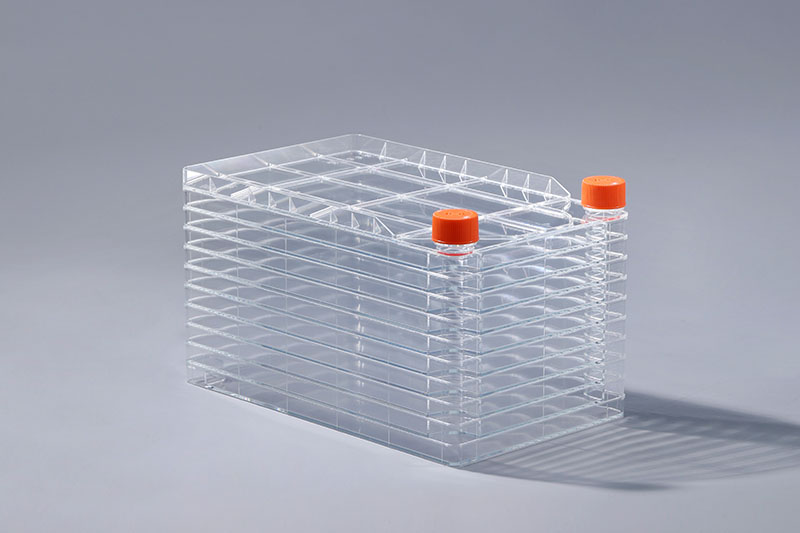The rapid development of the field of life sciences has continued to expand the demand for cell culture consumables. Among them, cell factories for large-scale cell culture are favored by many pharmaceutical companies and vaccine manufacturers. Cell growth requires certain conditions, in addition to a sterile environment, it also requires a suitable temperature.
Generally, the suitable temperature for mammalian and avian cells to be cultured in vitro is 37-38°C. Unsuitable ambient temperature will affect the growth of cells. The tolerance of cells to low temperature is stronger than that of high temperature. At low temperature, the metabolic activity and mitotic capacity of cells are reduced. If the temperature is not lower than 0 °C, although the cell metabolism is affected, there is no damage; at 25 to 35 °C, the cells grow at a slow rate.
High temperature is not good for cell culture. If the cells are cultured at 39~40°C for 1 hour, they will be damaged to a certain extent, but they may still recover, but they cannot tolerate a temperature increase of 2°C for several hours. The operation is serious, and most of the cells are killed when the temperature is above 43 °C. High temperature mainly causes the inactivation of enzymes, the destruction of lipidoids, the destruction of nuclear division, the production of coagulase, the coagulation of cells, and the denaturation of proteins. Therefore, high temperature must be avoided when culturing cells in vitro. When using cell factories for cell culture, a constant temperature incubator or greenhouse is used to ensure that the cells are always at a suitable temperature and maintain a good growth state.
Appropriate temperature is only one of the basic conditions for culturing cells in cell factories. In addition, sterile environment, osmotic pressure, gas environment and pH are required. Any failure to meet the standard will affect the process of cell culture.
The FAI climbed 5.9 percent year-on-year in the first 11 months of 2018, quickening from the 5.7-percent growth in Jan-Oct, the National Bureau of Statistics (NBS) said Friday in an online statement.
The key indicator of investment, dubbed a major growth driver, hit the bottom in August and has since started to rebound steadily.
In the face of emerging economic challenges home and abroad, China has stepped up efforts to stabilize investment, in particular rolling out measures to motivate private investors and channel funds into infrastructure.
Friday's data showed private investment, accounting for more than 60 percent of the total FAI, expanded by a brisk 8.7 percent.
NBS spokesperson Mao Shengyong said funds into weak economic links registered rapid increases as investment in environmental protection and agriculture jumped 42 percent and 12.5 percent respectively, much faster than the average.
In breakdown, investment in high-tech and equipment manufacturing remained vigorous with 16.1-percent and 11.6-percent increases respectively in the first 11 months. Infrastructure investment gained 3.7 percent, staying flat. Investment in property development rose 9.7 percent, also unchanged.
 English
English



















































